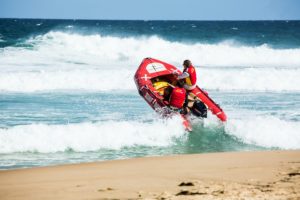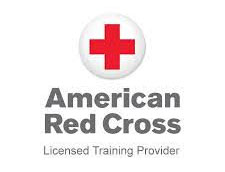Lifeguards: Answering the Call!
Swimming has always been a popular way to pass the time, exercise, have fun and cool off. In fact, it dates back to the 1800s when it was referred to as bathing. However, water isn't always the safest place to be. Whether the swimming takes place in open water like lakes, rivers, or the ocean or in a public swimming pool, it is a good idea to have someone nearby who can help if something goes wrong. This person should not only be an excellent swimmer but also be trained in life saving abilities and first aid. The challenge was recognized and thus the lifeguard came to be.
In 1912, the Young Men’s Christian Association (YMCA) developed a National Lifesaving Service. Two years later, in 1914, the American Red Cross Lifesaving organization was established. This service trained swimmers in lifesaving and CPR courses. After intensive training for certification, they were sent to work as lifeguards in their local communities.
Before long, lifeguarding became an exciting and rewarding career choice for those who enjoyed a good challenge. As swimming became more popular, non-swimming rescue methods were developed to help aid lifeguards. This was particularly beneficial for lifeguards at public beaches dealing with large crowds spread over long distances.
In the beginning, the lifeguard training programs focused primarily on personal water safety such as how to prevent drownings and protect oneself in emergencies. Non-swimming rescue methods, such as throwing a rope or a floating object to the human in the water, were encouraged because lifeguards considered swimming rescues only as a last resort due to the hazard presented by both a panicked swimmer and current wave conditions.
However, swimming rescues were unavoidable for professional beach lifeguards. Special tools, such as the landline and the dory, were developed to assist in swimming rescues. Over time, improved lifesaving devices were created by beach lifeguards all over the country. These devices included the rescue buoy, the rescue tube, and the rescue board. All were commonly used around the world at beaches, pools, and water parks. Today, many beach lifeguards use powerboats and personal watercraft to assist them in reaching off-shore swimmers in distress quickly. In addition, they use scuba equipment for deep water rescues. Another example is that lifeguards sometimes use boating equipment to help stranded boaters by guiding them back to shore.
Along with protecting the safety of swimmers, lifeguards also play an active role in educating people on pool and water safety. Many lifeguards also teach swim lessons to children and adults. Instructing children on the safety rules of the pool is a common duty for lifeguards. Instead of immediately removing a child from the water, the lifeguard can explain the rules and help him understand the reasoning behind the safety measures. Additionally, lifeguards can caution swimmers against other dangers in the waterways.
On public beaches where swimmers use lakes, rivers and oceans for recreation, lifeguards periodically must evacuate everyone for safety in the event a shark or other dangers are spotted nearby. It is in these cases that the lifeguards not only must act quickly but also help keep everyone calm and prevent a panic. Severe weather also can cause a beach evacuation.
Today, lifeguards rescue more than roughly 100,000 people from drowning annually. Even though swimming and recreational water activities are increasing in popularity, the incidences of drowning have decreased dramatically due to lifeguards and the work they do. Think being a lifeguard is an exciting career choice you might enjoy? We offer certifications and employment. We are currently training and certifying lifeguards in multiple locations. Click the link below to learn more.
https://swanaquatics.com/red-cross-certification-courses/lifeguard-certification
https://swanaquatics.com/red-cross-certification-courses/lifeguard-certification
This article is brought to you by: The Swimming Swan
















